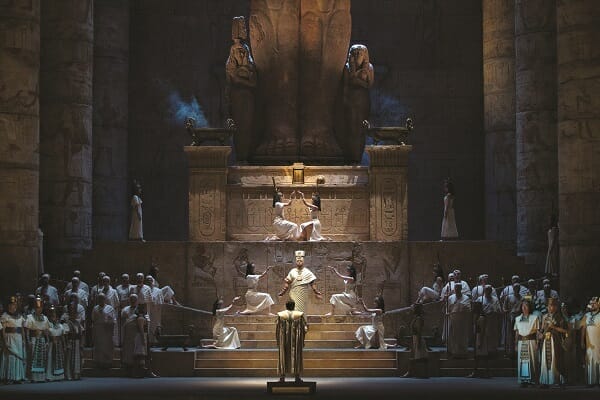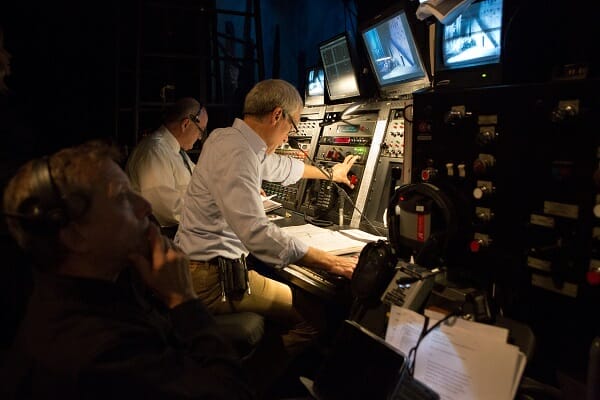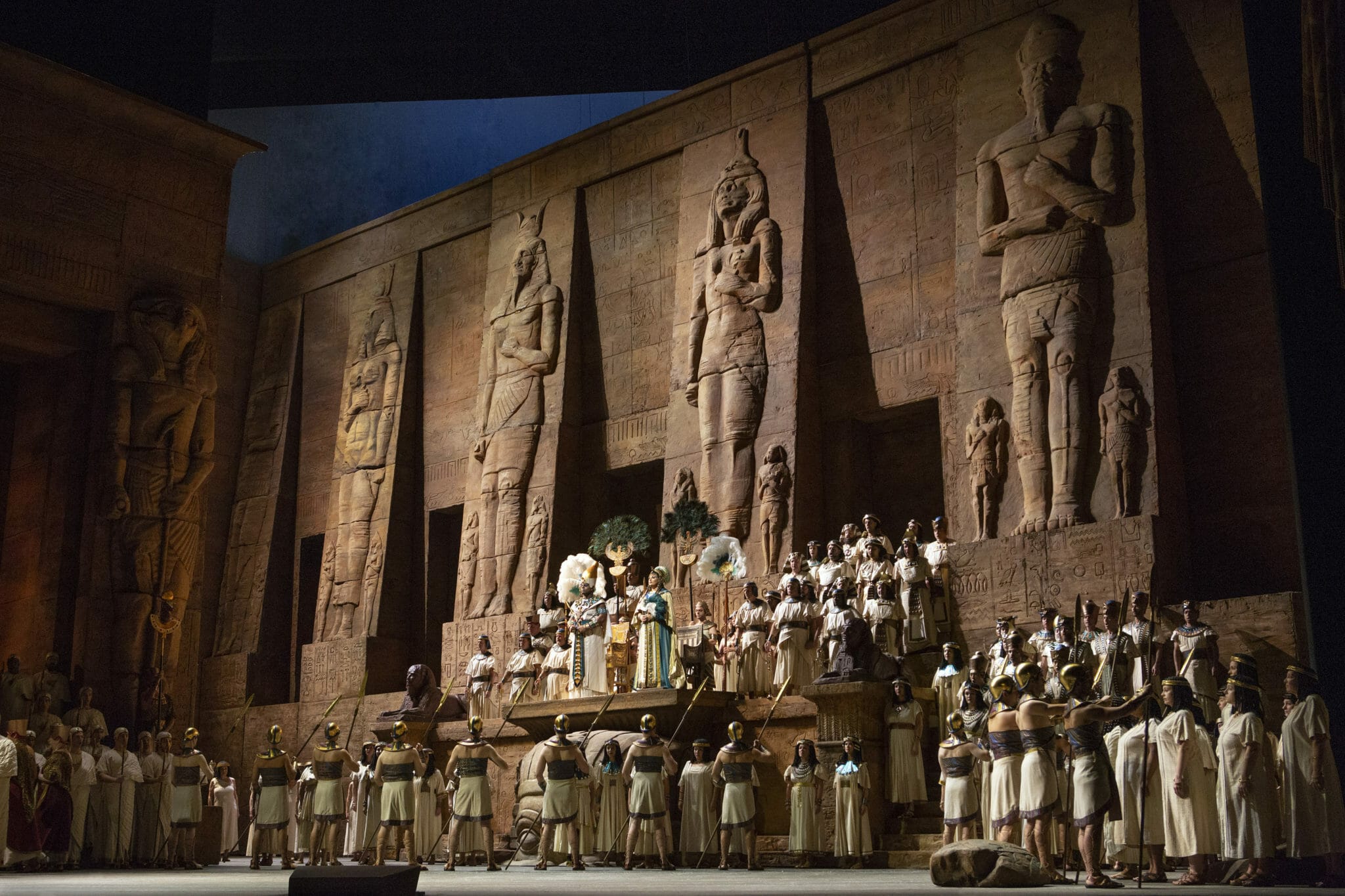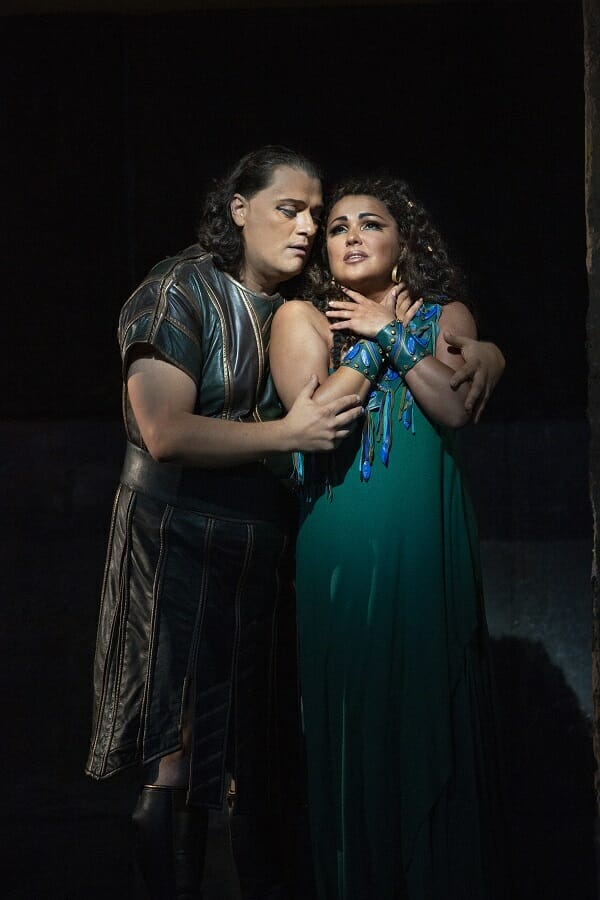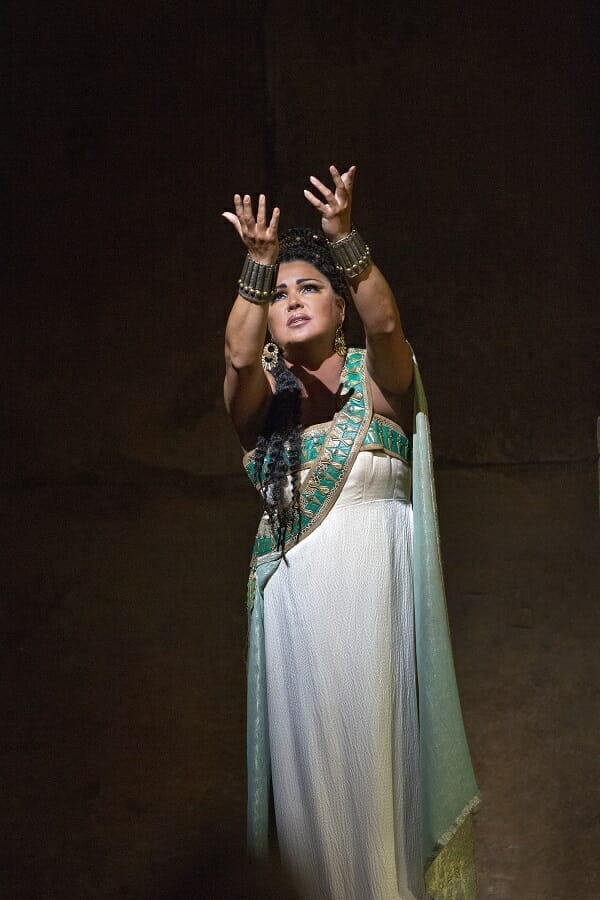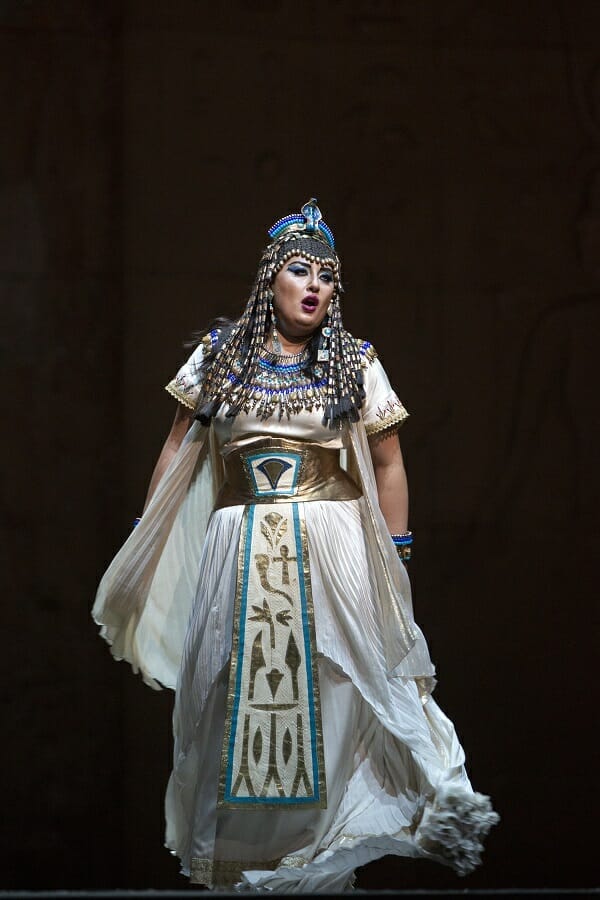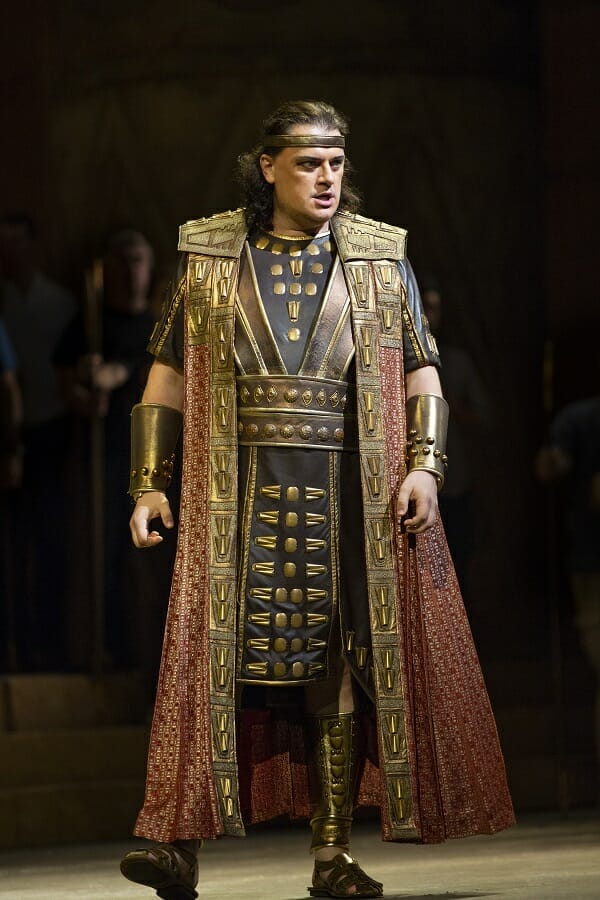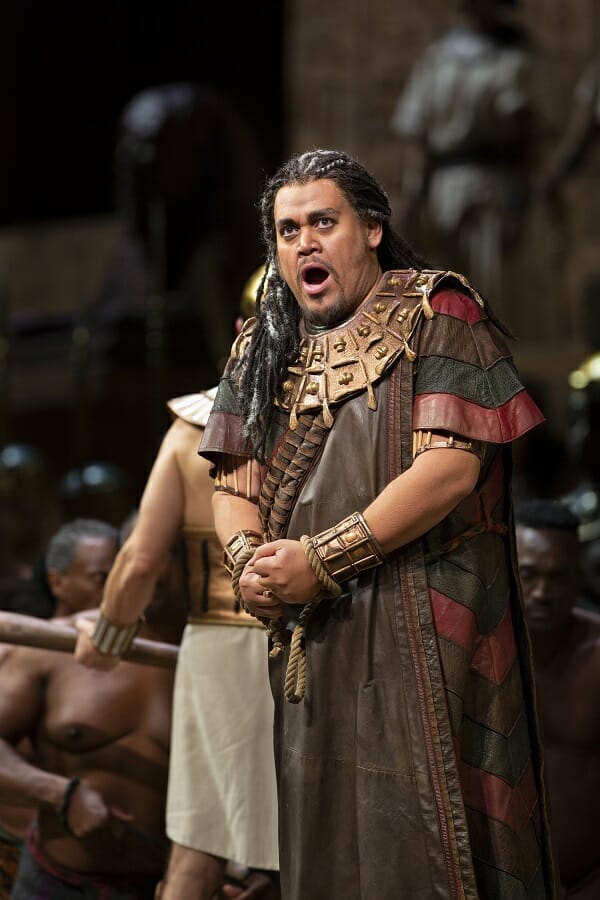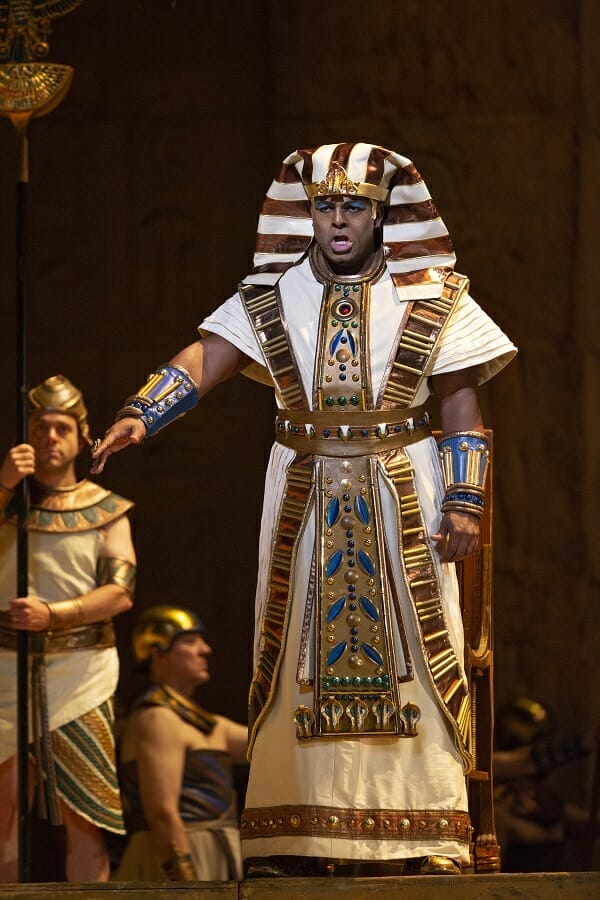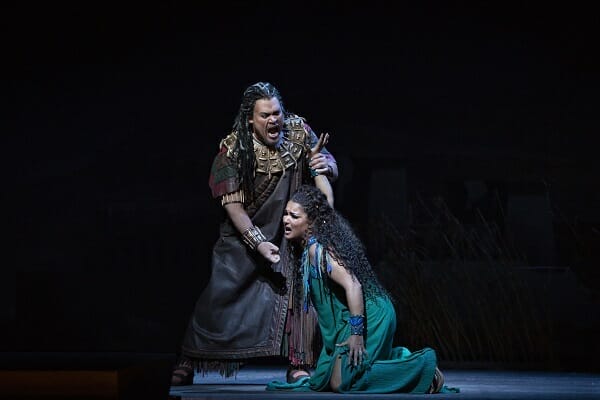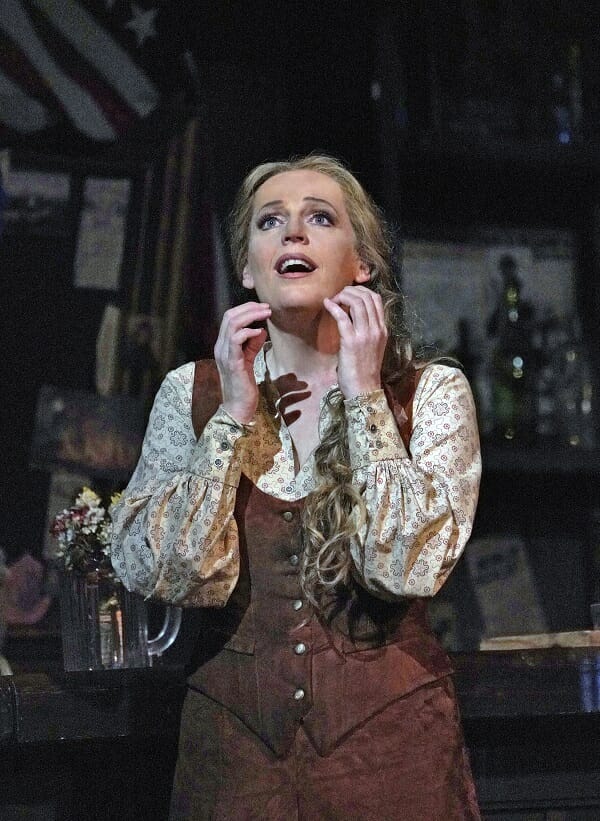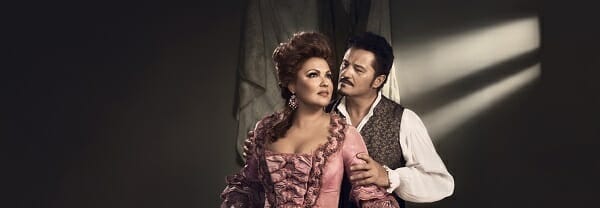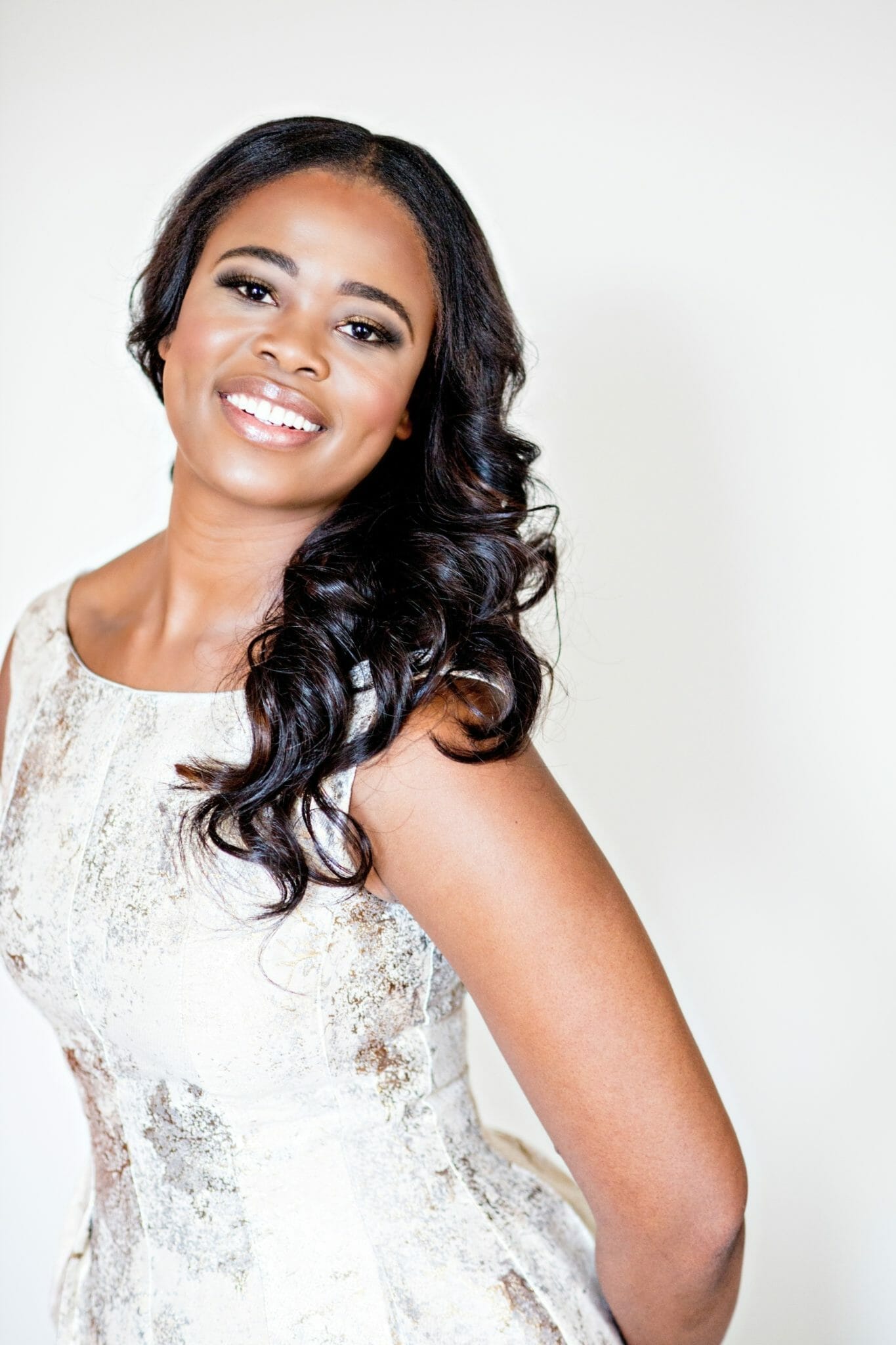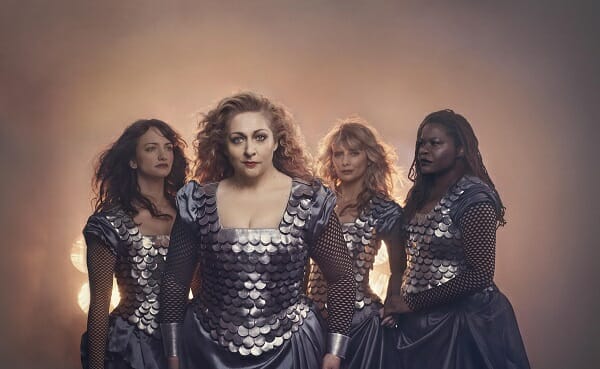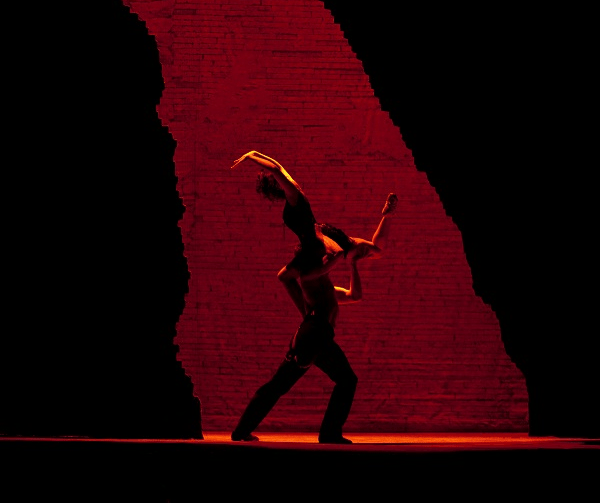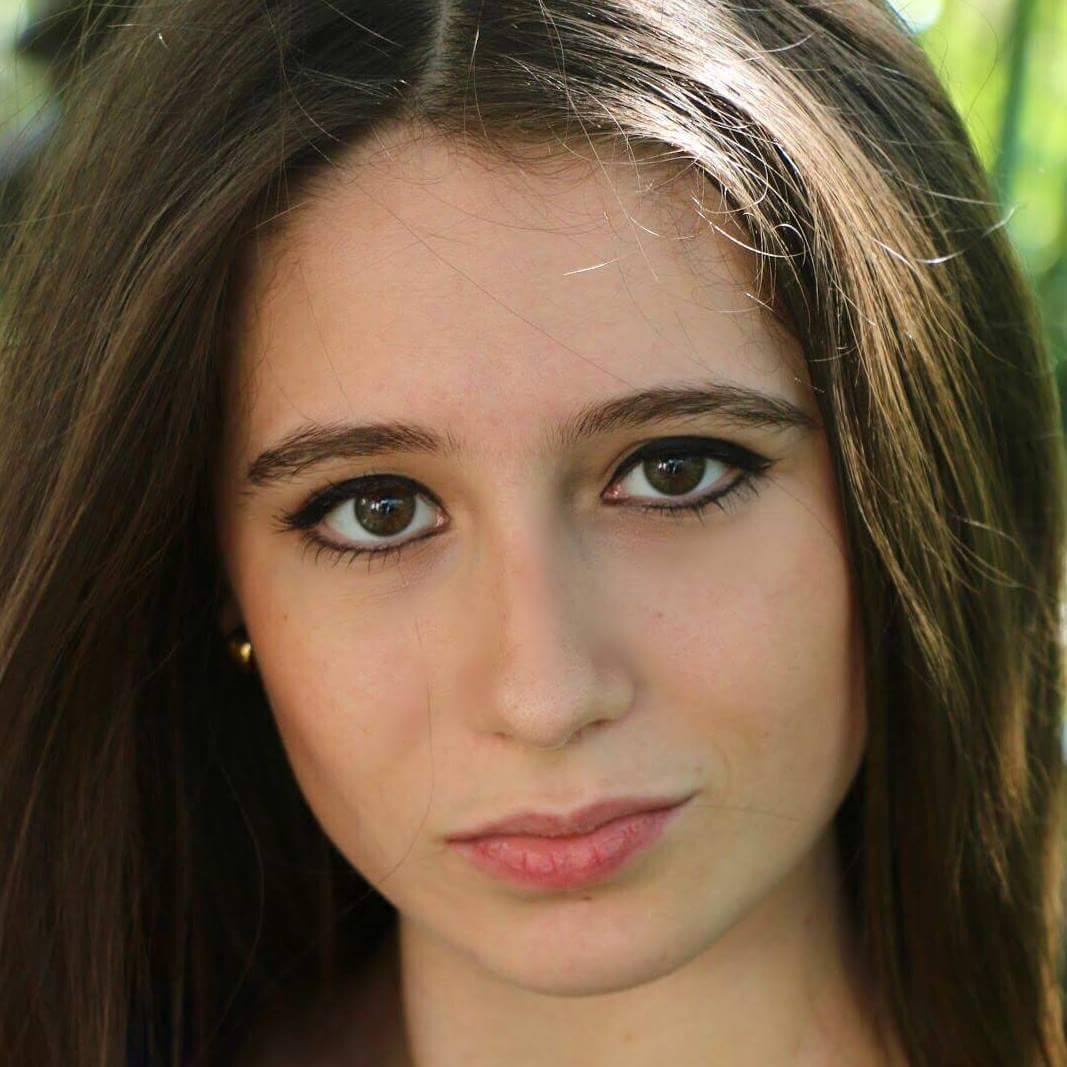The AMC Orange 30 cinema is a sleek, modern establishment in the midst of a metropolitan shopping district in Southern California. Flanked by palm trees and a neon red sign beckoning viewers to watch the newest blockbusters, the theater nevertheless provides the opportunity to be transported from the barren cultural climate of malls and action hero movies to another world beyond the parochialism of the cinemagoers’ own time and place. Last Saturday afternoon, attendees of the inaugural 2018-19 Live in HD Met broadcast were ushered into the oneiric world of Ancient Egypt.
An Immersive Experience: The Met Opera's Live in HD Broadcasts
In 2006, the Metropolitan Opera had the novel idea to present a select number of live performances by satellite on the big screen. Since then, the company has established partnerships with AMC Theatres, Cinemark, Cineplex Entertainment, and Regal Entertainment Group, and its broadcasts are viewed by hundreds of thousands of viewers internationally. This season, the series offers ten of its mainstage productions in a cinematic format: Aida, Samson et Dalila, La Fanciulla del West, Marnie (a new opera based on Hitchcock’s film of the same title), La Traviata, Adriana Lecouvreur, Carmen, La Fille du Régiment, Die Walküre, and Dialogues des Carmélites.
Those who are not well acquainted with opera would enjoy the cinematic approach, while veterans of the art form might appreciate the way in which the broadcasts enhance the viewing experience in altogether unprecedented ways. Granted, the sheer acoustical thrill of a great singer’s sound enveloping us in a physical space is lost. However, this loss is more than compensated by the rare opportunity to observe details and nuances that would be inaccessible in any other format and which highlight the inner musical workings of the opera. From the moment the prelude begins in the Live HD showing of Verdi’s Aida, the viewer is given an immersive experience. The diaphanous opening theme, which represents the eponymous Ethiopian princess, is accompanied visually by a camera shot of the principal violinist. No longer hidden in the obscurity of the pit, his earnest expression and concentrated air, as well as those of his colleagues, duly reflect the finesse and sensitivity the violin section lends to this initial statement of the melody. When the theme is superimposed over a solemn descending scale in the cello section, an overhead shot appears to visually embody the growing tension in the music.
A Triumphal Production
Aida was premiered at the Cairo Opera House on December 24, 1871 to instant success. It is the story of the enslaved Ethiopian princess Aida and her lover Radames, Egypt’s military hero. Radames is compelled to serve his countrymen by going to war against her people. Meanwhile, the princess of the Nile Amneris also burns with passion for Radames. Her unrequited affection towards him and her jealousy of Aida precipitate the lovers’ tragic deaths. Much of Aida’s appeal lies in Verdi’s masterful use of local color. We exult in the brilliant touches of instrumental timbre throughout, including six valveless "Egyptian" trumpets for the lavish Triumphal March, which reflect the composer’s meticulous attention to recreating history. The music evokes the setting so evocatively that many viewers demand a pharaonic mise-en-scène .
The Met’s time-tested Sonja Frisell production serves such expectations. As the curtain rises, the set design by Gianni Quaranta powerfully asserts the theme of Egypt's indestructible might with terracotta-colored torsos of pharaohs creating the illusion of dimensions far surpassing those of the proscenium. In Act I, young Arseny Yakovlev appears as a messenger to announce the conflict between the Egyptians and the Ethiopians. An elevated throne and hordes of supernumeraries below create a scene of great theatrical impact. The famous Triumphal March in Act 2 reaches a zenith in a coup de théâtre created by hydraulic stage lifts, which gives the impression that the stage is gliding into place from above. Guards solemnly keep watch as the stage on which they stand descends to complete the diorama of Memphis’ public square.
The moment is so arresting that it is no wonder it is met with resounding applause, and yet it is merely the preface to a scene that brims with further detail and complexity. An edifice half submerged in the sand supports a platform where nobles observe a procession of plumed poles and chests filled with treasure. Archers, shieldsmen, and other military men arrive, each in their distinctive costumes. Two horses enter, garbed resplendently in gold.
Female dancers in white skirts extend their arms in supplicating and sinuous lines, while the men complement their floating movements with virile leaps. Overhead shots intensify the vertiginous quality of the dance, with many in the audience likely moved by the way the HD format enhances the experience. The chorus and the members of the royal entourage are placed on stage in a still geometric pattern as the dancers leap about to the oriental rhythms. The choristers surround the balletic performance on either side of the stage while the regal retinue stands sacredotally above on the platform, their stoicism heightening the feeling of gazing onto a tableau-like scene. Radames’ stunning entrance in an intricately-carved chariot pulled by feather-adorned horses ends the pageant, and the camera captures the look of satisfaction that exudes the victor’s confidence.
Spirituality and Mysticism
The monumental ensemble numbers are accompanied by moments that reveal the intimacy and mysticism of Verdi’s score. In the consecration scene of Act 1, for instance, rising incense dissipates into ethereal blue light as priestesses pose like stylized profiles of ancient glyphs. They come to life in their sacral capacity to make offerings at Ptah’s temple amid a backdrop of Egyptian murals, while a closeup view singles out a sibylline priestess dressed in white. The incantatory and sacred quality of the score, as illustrated in Gabriella Reyes’ melismatic singing off-stage, is also reflected in a hieratic choreography of symmetry: the priestesses mirror each other as they glide ritualistically from one position to another. Other elegiac sequences include muted tapestries of Amneris’chamber in Act 2 scene 1 as she sings “fill me with rapture”, and the cobalt sky studded with stars in Act 3 that conveys a sense of suave night air around the red-lit Temple of Isis. In this way, the production is in keeping with the originality of the opera, in that the heart of the work lies in the spiritual theme of Aida and Radames’ ecstatic love. Radames is entombed as a punishment for betraying his country for the sake of Aida. After she joins him, the darkness of their surroundings is illuminated by a faint halo of light. They prepare to die together as they bask in an atmosphere suffused with luminous serenity and it is then that they sing "si schiude il ciel" (the sky opens). The dichotomy between the cold, glittering world of the pharaohs and their love that transcends time is captured in the contrast between the temple looming above, with its priestesses accomplishing their habitual tasks, and the tomb below.
Amneris calls for pity from the center of the sanctuary; she is dressed in a rich purple cloak as the lovers’ tender phrases evanesce. We understand from these moments that the spirit of beauty encapsulated in Verdi’s music allows the pair to triumphantly leave the material world above their tomb for the the light of eternity. Those who wish to uplift their spirits through the aesthetic experience would cherish this masterful finale, as it underscores how the power of music transfigures reality.
A Star-Studded Cast
Anna Netrebko’s role debut at the Metropolitan opera as Aida was highly anticipated. When she and mezzo-soprano Anita Rachvelishvili combine forces in their confrontational duet of Act 2 scene 2, Netrebko’s lush cries of “pietà” and Rachvelishvili’s chesty furor are fitting testaments to their formidable vocal production. In the author’s opinion, the female leads could have allowed us to better forget the effort it takes to hold out their own on the decibel meter. Even when Netrebko delivers admirable moments of sustained pianissimo and cantilena singing, especially in Act 3, she does not achieve a complete dissolvement into her character, which would require her voice to be at one with the musical intent. Rachvelishvili possesses a great purity of technique and a magisterial, piercing voice that aptly embodies the princess’ wrath, power, and jealousy. However, although she repeatedly expressed in the interview between acts that her character was “not a bad woman”, this reviewer believes the softer aspects of Amneris’ character that should emerge in the latter part of the opera -- such as her regrets -- could have been more adequately projected. In other words, those expecting to hear renditions as indelible as Leontyne Price’s or Grace Bumbry’s might be disappointed, although these performances are not without their merit. And there are some stand-out moments from the rest of the cast. Ryan Speedo Green and Dmitry Belosselskiy as the Egyptian king and the high priest respectively deliver solid performances, and Quinn Kelsey’s full-throated baritone and dramatic presence as Amonasro enhance every scene in which he appears. His mastery of nuance as an actor, expressed through minute changes in the expressivity of his eyes for example, are a particular joy to witness in the cinema. His scene with Netrebko so elevates her performance that it becomes one of the most touching and anxiety-inducing moments in the opera, belying Verdi’s fondness for father-daughter scenes. Quinn Kelsey will return to the Met to play another Verdi father, Germonte, in the Live HD Broadcast of La Traviata. His appearance will be one to watch.
The tenor’s famous opening aria, “Celeste Aida”, not only requires the singer to maneuver the passagio with ease and little opportunity to warm up, but also demands a dramatic transformation from a glory-hungry military man into a tender lover.
The blare of trumpets punctuating Radames’ recitative (Se quel guerrier io fossi! / if only I were that warrior!) gives way to delicately shimmering orchestration reflecting the hero’s desire to place his beloved on a "throne near the sun". Aleksandrs Antonenko’s Radames emphasizes the warrior’s might with bray-like singing that does little to soften his bellicose ardour in the preceding measures. In the reviewer’s opinion, his tenor is ear-splitting throughout the opera when we could appreciate a more sybaritic quality of voice. Perhaps Antonenko could have also made greater use of un-pressed pianissimo singing to reflect the sublime atmosphere of the finale scene.
The Met chorus rarely disappoints and is equally thrilling when it emphatically sings the cries of “guerra” or whispers reverently in the temple of worship. The costumes by Dada Saligeri include such creations as Amneris’ elaborate turquoise crown with its glimmering textures, Radames’ beetle headdress in jeweled tones, and Aida’s gossamer gown of deep bluish green hue with tribal accents, which flatters Netrebko’s figure.
Mysteries Unfurled in the Met Opera Live HD Format
In the interviews hosted by Isabel Leonard, many of the singers stated that Verdi wrote in everything to render his work effective, and that all the singer has to do is follow his intention faithfully as noted in the score. Although this sentiment might seem cliché, it is true that some scenes are so emotionally powerful that they are virtually infallible. When Amneris hears Radames being tortured after he refuses to speak in his defense, she is shown as well on stage helpless in her palace, crying as she and we listen in: “they hunger for blood! And they call themselves priests!”. This particular moment resonates like an epiphany. Anyone with a mind sensitive to the tension between the aspiration to love and the implacable forces that attempt to thwart it will do themselves a great service listening or re-listening to this opera. Throughout the broadcast, we are privy to dimensions of the operatic experience that might otherwise seem elusive (for example, the stagework of moving sets was captured on the screen in between the acts), like marvelous mysteries unfurled both for the novice and for the seasoned opera attendee. The Aida broadcast testifies to the remarkable opportunity viewers have internationally to see high-quality drama and sumptuous music delivered to them in the comfort of their local movie houses, and there are a number of promising productions coming up that equally deserve to be seen and supported.
HIGHLY RECOMMENDED
Composer: Giuseppe Verdi
Conductor: NICOLA LUISOTTI
Production: Sonja Frisell
Set Designer: Gianni Quaranta
Costume Designer: Dada Saligeri
Lighting Designer: Gil Wechsler
Choreographer: Alexei Ratmansky
Revival Stage Director: Stephen Pickover
Chorus Master: Donald Palumbo
Cast:
ANNA NETREBKO, ANITA RACHVELISHVILI, ALEKSANDRS ANTONENKO, QUINN KELSEY, DMITRY BELOSSELSKIY, RYAN SPEEDO GREEN, ARSENY YAKOVLEV, GABRIELLA REYES.
LIVE RUN IN NYC:
When: Performances through March 7 at the Metropolitan Opera, Lincoln Center, with varying casts.
Tickets: $20+ For information and tickets visit the Met Opera website or call 212-362-6000. To purchase a season subscription (and hear Netrebko in the role of Aida next season), visit the Met Ticket and Subscription website.
The reviewer encourages readers not only to purchase the DVD once it is released, since the Frisell production will soon be replaced at the Met, but also to consider looking at another masterful performance of this production at the Met Opera Shop with Millo, Domingo, Zajick, and Milnes in the title roles.
LIVE HD MET BROADCASTS
When:
Various dates and times from October 20th to May 1st, 2019.
Tickets:
$23 average price worldwide.
For information and to find cinemas near you, visit the Met: Live in HD website.
Photography: Production photos by Marty Sohl, Ken Howard, and Vincent Peters; videos courtesy of the Metropolitan Opera Youtube channel.
About the Author
Watch this video previewing Picture This Post's OPERAS WE LOVE - roundup.

